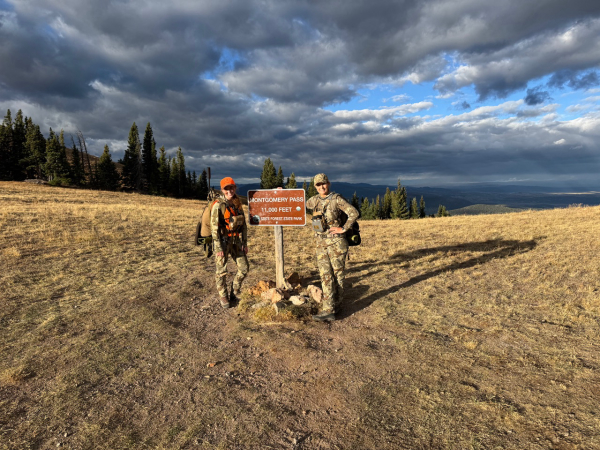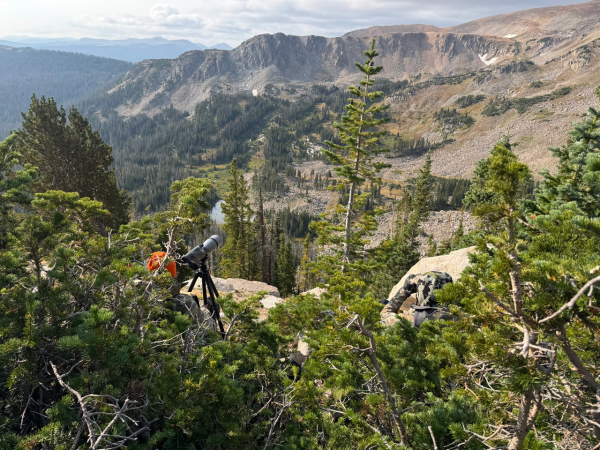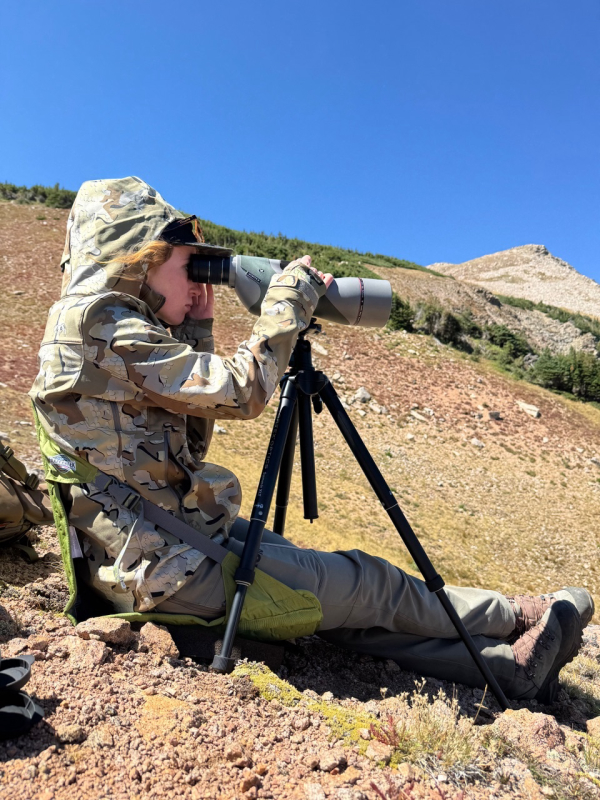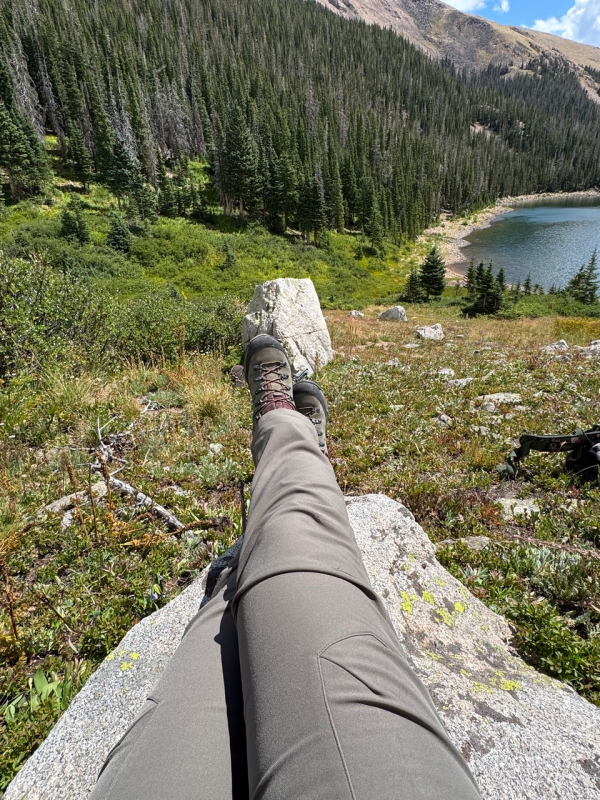When my daughter drew a sheep tag for northern Colorado this spring, there was immediate shock and excitement. These tags have a less than one percent chance of drawing and for many, including us, drawing a tag is likely the only chance we will have to ever go on a sheep hunt.
After the initial euphoria wore off, we realized how much we needed to do to get ready. Her units covered hundreds of thousands of acres including the vast Rawah Wilderness—there was no doubt that we would need to be prepared for backcountry hunting to a much greater extent than we had for any other hunt we had done in the past.
Let me say, I’m not an expert on this—our learning curve was a steep, much like the country we would be covering—so this story is intended share some of the things we learned and the gear we used that helped us along the way.
Good Glass
The first lesson of sheep hunting (and most backcountry hunts) is that you’re going to spend a lot of time behind your binoculars and spotting scopes. Some of the best advice we got was to not skimp on the quality of our optics—having quality glass and figuring out the best way to use your optics is key.
One consideration is getting the best magnification you can without adding significant weight. We all use 10x42 binoculars that offer a good balance of quality magnification in a compact, lightweight body. I have a pair of Maven B.1, mine are older than their current B.1.2 but I have appreciated Maven optics since my first antelope hunt in 2018. My daughter has a pair of Vortex Razor HD and my husband uses an older pair of Swarovski ELs.

Chest packs for our binoculars helped keep them secure while we hiked to high elevation glassing points.
We spent many, many, many hours using them on this hunt and they all performed well. Because we covered so many miles on foot and horseback, I strongly recommend getting a chest pack that will keep your binos easily accessible on your chest without allowing them to bang around when you hike.
Most of our glassing was done using our binos until we had something that we needed a more detailed look at, which requires a quality spotting scope. We used a Vortex Razor HD 60x85mm scope—ours is angled and we borrowed our friend’s straight scope. We found that the straight scope offered easier viewing when seated, which is how we did most of our glassing, and was easier to load in a pack.

Our incredible glassing location the first week of the season.
In 2020, I had the opportunity to test four different brands of scopes including Maven, Swarovski, Vortex, and Meopta for an elk hunt. All brands performed very well, and our choice of the Vortex came down to that scope’s ability to pick up details in low light conditions and the quality value for the price.
Having a good scope and tripod adds a lot of weight to a pack, but compact scopes didn’t provide enough magnification improvement from what we could see with quality binoculars—it’s worth the weight.
One of the most unsung needs during epic, long glassing days is a seat. Sitting down provides stability to keep your binos from wiggling as you move methodically across the landscape. Hands down the best option I found was a Crazy Creek Hex 2.0 chair.

The Crazy Creek Hex 2.0 (above) with the straight Vortex Razor HD spotting scope made for comfortable glassing of the high country. My 6’ 4” husband fits comfortably in the Longback version of the Crazy Creek Hex 2.0 chair (below).
These seats are extremely lightweight and roll up and clip closed to make it easy to attach to your pack. The Hex padding offered good comfort from sitting on rocks (though we all also had a butt pad and the combination of the two was perfect) and also offered back support to lean back, allowing me to adjust my position to scan high above me without having to tip my neck. I highly recommend these chairs for glassing and also as comfy, lightweight camp chairs.
These Boots are Made for Walking
When we tallied it up, we hiked well over 120 miles during scouting treks and the hunt itself. Our longest single day trek was about 15 miles with nearly 3,000 feet elevation gain.
Backcountry hunts require you to cover a lot of ground and if your boots aren’t comfortable and stable, you will know it. Heck, I had generally comfortable boots and my feet still hurt on those long back-to-back days of hiking.
Our entire family loves Schnee’s boots and since we scouted through the summer and the hunting season was in September, we didn’t need any insulation in our boots. Schnee’s Timberlines are uninsulated and come in Women’s and Men’s versions. The biggest consideration is having enough ankle stability to handle sidehilling on steep slopes and walking through rocks, so a taller boot is a good choice.

My Schnee Timberline boots made long hikes more comfortable.
I strongly believe you should get boots designed for your gender because women’s feet simply aren’t shaped the same as men’s feet. I have had success on other hunts with LaCrosse and Irish Setter women’s hunting boots, as well as LL Bean’s women’s Warden Field boot (each brand also has a broader selection of men’s hunting boots).
I personally don’t recommend buying online—good hunting boots should be fitted properly, and you might not wear the size you normally do. I had my boots fitted at the Schnee’s booth during Safari Club International’s annual convention (most of the boot manufacturers will be at the larger hunting conventions) and ended up getting a half size smaller than I expected.
If you’ve got good boots, don’t forget about good socks. Merino wool socks with extra padding on the balls of the feet and heels make a huge difference in wicking moisture from the feet and preventing blisters. We liked Point6 Essentials in both medium and heavyweight crews as well as Kenetrek’s Glacier socks.
More than anything, I can’t overstress the importance of breaking in your boots and finding the socks that work best on shorter hikes for weeks or even months before the actual hunt.
It’s all in the Pack
Whether it was overnight trips or day hikes, having a good pack is essential. Our packs held our first aid kit, rain gear, snacks, water, spotting scope, and eventually camping gear and my daughter’s rifle—and having meat packing ability is also important if you are successful.
Getting purpose-built packs that can carry all of your needs and distribute the weight evenly across your hips, back, and shoulders is critical. For most of my day tripping hikes, I used Badlands ATX 16 which provided plenty of straps to connect my Crazy Creek and side pockets for water, while being extremely comfortable.
My daughter’s pack is an older women’s version of the ALPS Outdoorz Hybrid X pack, it provided plenty of space and some purpose built pockets and straps for the scope and her rifle.

The ALPS OutdoorZ pack provided efficient carrying of all necessary equipment in the backcountry.
There are plenty of good hunting packs available from KUIU, Eberlestock (my husband’s choice), Mystery Ranch, Stone Glacier, and more. For me and my daughter, packs designed for women are important to allow the hip strap to fully tighten on our waists and for the frame to fit better on our torsos. While several brands used to make women’s-specific packs, they are not as common anymore—Mystery Ranch does offer women’s designs but I haven’t had the opportunity to try them out.
And as a side note, make sure you properly adjust your pack to fit comfortably. Start with everything loose and then tighten straps from the bottom up (first secure hip belt so it sits firmly on the top of the pelvic bone, then shoulder straps, then sternum strap, and finally load lifters) to ensure the weight is balanced first on your hips and distributed evenly across your back and shoulders.
In another story, I’ll run through some camp specific gear we used as well as some other products that made a huge difference for us.
– Jodi Stemler